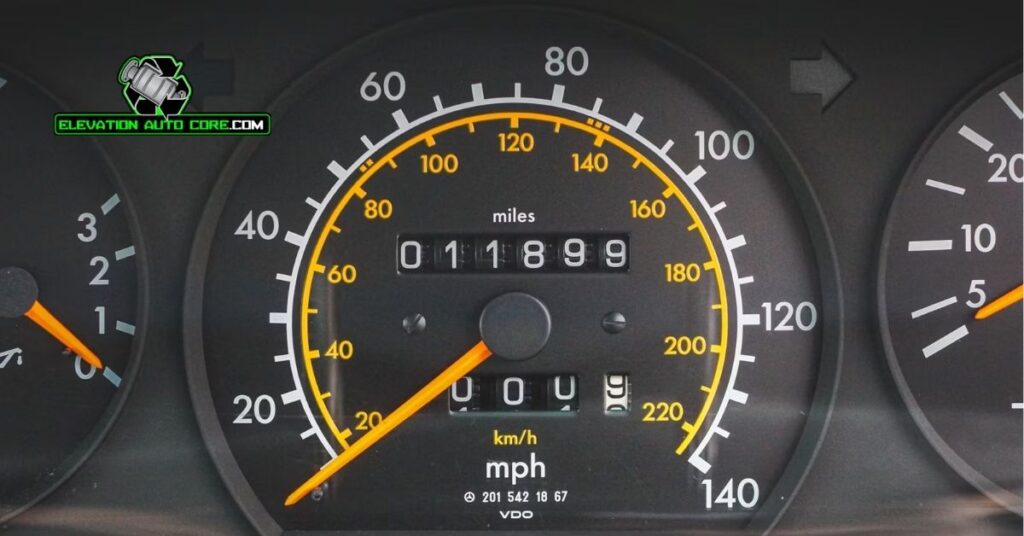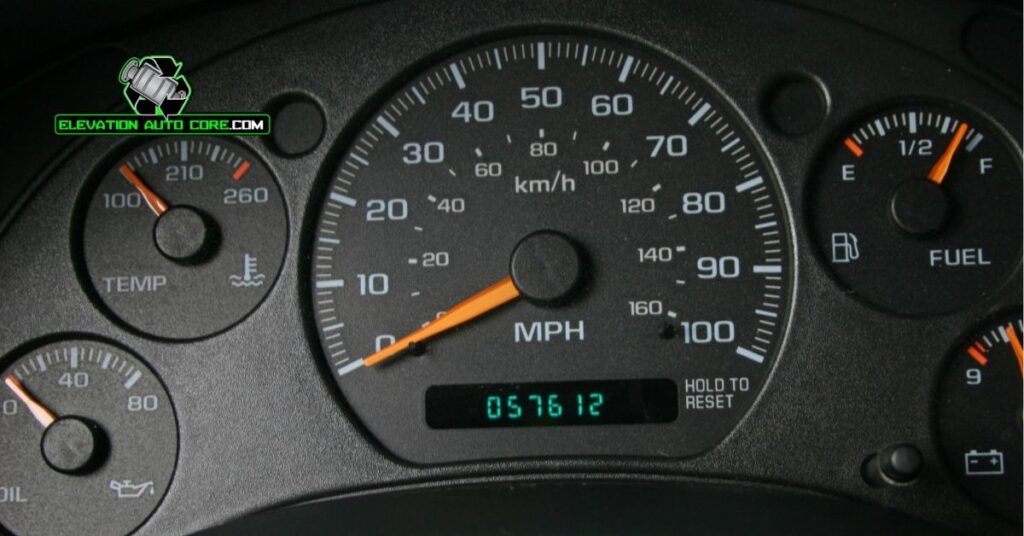How many miles is too high for a used car? It’s a question every savvy buyer asks when handling the used car market. Mileage matters, but it’s not the only factor—age, maintenance history, and overall condition play a huge role too. Keep reading to uncover what mileage really means for a car’s value and reliability.
Understanding Mileage In Used Cars

Mileage plays a important role in assessing the value and longevity of a used car. It helps gauge wear and tear, offering insights into the vehicle’s overall usage.
What Mileage Means For A Vehicle’s Lifespan
Vehicle mileage directly correlates to its mechanical durability. Higher mileage often signifies greater use of parts, including the engine, suspension, and transmission. A well-maintained car with substantial mileage can outperform a neglected one with lower mileage. Maintenance records frequently reveal more about a car’s condition than the odometer reading itself.
You may find that many vehicles can safely exceed 200,000 miles when serviced properly. Advanced materials and improved engineering allow modern cars to last longer compared to older models. But, if the mileage surpasses expectations for its age, investigate possible issues before purchasing.
Average Mileage Expectations By Vehicle Type
Different vehicle types tend to accumulate varying annual mileage. Compact cars and sedans typically average around 12,000 to 15,000 miles per year. SUVs often register annual mileage between 10,000 and 15,000, depending on their purpose. Trucks and commercial vehicles may exceed 20,000 miles yearly due to heavier usage.
Consider whether the mileage aligns with the car’s purpose and category. Lower than average mileage on an older vehicle may suggest irregular use, possibly leading to inactivity-related problems. Conversely, significantly higher mileage on younger cars warrants closer inspection of maintenance details.
How Many Miles Is Too High For A Used Car?

Mileage is a critical factor when evaluating used cars, as it reflects overall use. While modern vehicles often last beyond 200,000 miles with proper care, several considerations help determine if a car’s mileage is too high.
General Guidelines For Assessing Mileage
Mileage standards vary by vehicle type, so matching these to usage expectations is key. For instance, compact cars and sedans usually average 12,000 to 15,000 miles per year. SUVs often fall between 10,000 and 15,000 miles annually, whereas trucks may see over 20,000 miles per year based on industrial or work-related purposes.
If a used car’s mileage significantly exceeds these benchmarks, it implies heavier wear, requiring close attention to maintenance records. Conversely, substantially lower mileage for its age could raise concerns like prolonged inactivity, which might lead to issues like battery or tire degradation.
Factors Influencing High Mileage Impact
The condition of high-mileage used cars depends on various elements. A vehicle with thorough maintenance history often performs better than one with unverified upkeep, even though similar odometer readings. Regular servicing and timely component replacements, such as oil changes or timing belts, can mitigate the impact of higher mileage.
Driving patterns also affect wear. Vehicles predominantly driven on highways typically experience less strain because of constant speeds, unlike those used in stop-and-go city traffic. Longevity also correlates with the car’s make and model, as some brands maintain mechanical durability more effectively when properly cared for.
Extra repairs or part replacements may be necessary for high-mileage vehicles, especially if essential systems like the engine or transmission show signs of wear. Consider how these potential costs factor into the car’s value before purchase.
The Role Of Maintenance In High Mileage Cars

Proper maintenance heavily influences the reliability of high mileage vehicles. Even with important wear, consistent servicing can maintain performance and extend a car’s lifespan.
Importance Of A Thorough Vehicle History
Obtaining a complete vehicle history is essential when evaluating high mileage cars. Accurate records reveal how diligently prior owners maintained the car. Frequent oil changes, timely part replacements, and scheduled inspections indicate better upkeep. Look for documentation of major repairs like timing belt replacements or transmission servicing as they suggest preventative care. If the records are sparse or missing altogether, consider it a red flag, as neglect could compromise the vehicle’s longevity.
Mileage by itself tells only part of the story. A sedan with 150,000 miles that’s been routinely serviced may perform better than an SUV with 100,000 miles and inconsistent maintenance. Verify exact details about previous owners, climate conditions, and driving styles documented in the car’s history. These factors shape the wear patterns and predict the future performance of high mileage vehicles.
Key Maintenance Signs To Look For
Certain maintenance signs indicate how well a high mileage car has been cared for. Inspect tire tread depth and alignment to gauge the condition of suspension and steering components. Look under the hood for a clean engine bay and check for signs of leaking fluids, frayed belts, or corroded parts. Pay special attention to brakes and battery health, as neglect here suggests broader systemic issues.
Ask for recent documentation covering critical systems like the engine or transmission. A recent oil change, coolant replacement, or brake pad update demonstrates proactive care. Evaluate if the owner has replaced wear-prone items like spark plugs, fuel filters, or hoses. High mileage vehicles that received consistent maintenance usually exhibit fewer surprising repair needs. Always test drive the car to identify unusual noises, delayed gear shifts, or handling problems that might indicate hidden defects.
When To Walk Away From A High Mileage Vehicle

Certain signs can indicate that a high mileage vehicle isn’t the right choice. Observing these factors ensures you avoid costly mistakes and long-term issues.
Warning Signs Of Imminent Issues
Mechanical problems that suggest important wear might signal walk-away scenarios. Listen for unusual engine noises like knocking or rattling, which often highlight internal damage. Check for visible leaks under the car and inspect the exhaust for excessive smoke. These can point to failing gaskets or worn-out seals.
Pay attention to transmission performance. If the car hesitates during acceleration or shifts gears roughly, repairs could be imminent. Look for dashboard warning lights that indicate malfunctioning systems, especially engine or transmission alerts. Ignoring these lights often leads to costly fixes later.
Examine the suspension. Excessive bouncing or uneven tire wear might reveal poor alignment or failing components. Investigate brake performance. Grinding sounds, squeals, or a spongy brake pedal suggest critical repairs are needed.
Cost Vs. Benefit Analysis
Balancing repair costs with potential value is critical for high mileage vehicles. Determine whether the asking price aligns with the car’s lifespan and necessary upkeep. For example, purchasing a vehicle for $5,000 but spending $3,000 on repairs in the first year negates cost benefits.
Evaluate the potential lifespan based on mileage. Cars exceeding 200,000 miles might only provide limited use before major repairs arise. Consider whether dealer warranties or third-party service plans apply. Without coverage, you’ll bear all repair costs.
Factor in resale value. Vehicles with exceptionally high mileage typically depreciate faster. If future resale isn’t feasible, this limits long-term advantages. Always calculate the total investment, including insurance and maintenance, before committing to a purchase.
Conclusion
When shopping for a used car, mileage is just one piece of the puzzle. A high-mileage vehicle can still be a reliable choice if it’s been well-maintained and aligns with your needs. Always prioritize a thorough review of maintenance records and the car’s overall condition to ensure you’re making a smart investment.
By focusing on the bigger picture, including repair costs and long-term value, you can confidently decide whether a high-mileage car is worth it. Remember, informed decisions lead to better outcomes in the used car market.

